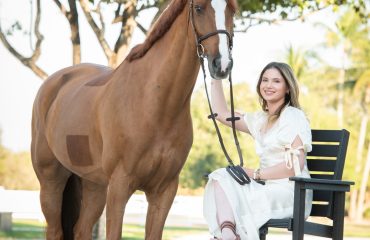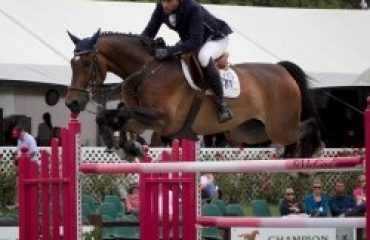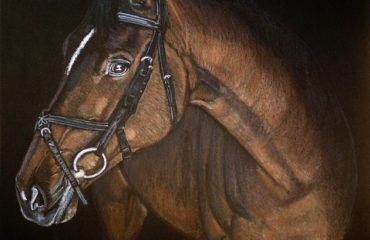
Brian Walker
Photo by Hervé Bonnaud, 1clicphoto.com
Brian Walker, a dual Canadian and American citizen, has trained, worked and ridden alongside the best in the world over the last 25 years. As a junior, Brian won the Maclay Medal Equitation Championship in 2001. Brian has made a name for himself by developing quality horses into successful competitors in both the hunter and jumper arenas, earning accolades for himself and his clients. Do you have a question you want Brian to answer? Send questions to editor@sidelinesnews.com.
What do you think makes a good course?
My favorite courses are ones I jump clean. However, I don’t necessarily think it was a good course just because I jump clear. There are many factors that make a course great. I feel a course should have equal amounts from both leads and should have a balance between oxers and verticals. I like a course that really gets the horses going forward into a rhythm early in the course, then technical questions should be asked once horse and rider have established their rhythm. I think a great course has combinations that allow the horse to jump and don’t trap them. There’s nothing worse than when a horse struggles though a combination because of poor course design. My most important factor in a great course is having a nice approach to the first jump. I see so many courses where the first jump is in a terrible location and is difficult to get to. Young horse courses should be simple. The goal of a young horse course should be getting them to jump clear rounds and giving them different questions where they learn something new by the time they’re done at each show.
The FEI World Equestrian Games are coming up in September. What are you most excited to watch? Who do you favor for the blue in the show jumping team portion?
Championships are exciting to watch because there’s always an underdog in the mix on the last day. I think it’s great WEG is being held in the U.S.A., which gives the U.S.A. and maybe Canada some extra support. For a gold team medal, I think Ireland is quite strong. They have a lot of depth and some very experienced riders and horses. Individual medals can go a lot of ways. Swedish Henrik von Eckermann on Mary Lou is one of my favorites. Swedish rider Peder Fredricson is a top contender as well. I think McClain and Beezie would be the American favorites to medal this year. However, Devin Ryan’s horse was impressive last year and has been impressive this year. Despite his lack of experience at that level, he would be my long shot to bet on, so don’t count him out if he makes the team.
My horse is a natural jumper and thoroughly enjoys it. However, he is jumping at heights that rival the fencing height along his paddock. I can’t help but wonder if he might jump over it one day. Do you have any tips for teaching him the difference between the paddock and ring and what is and isn’t appropriate to jump over?
Horses are clever animals. Jumps are a lot different than paddock fencing. Let’s not forget that jumping horses around courses is not a natural thing to do. They are willing and capable when we ask them to do it. Regardless of what height you compete at, most horses can jump a paddock fence. There aren’t any tips — if the horse wants to jump the paddock fence, it will; if it doesn’t, it won’t. Most horses don’t jump out of the paddock, and if one does it often, then they need to be in a stallion paddock with very high fencing, or maybe the horse just doesn’t like being outside.
I have a tendency to over-lean when jumping, which I know is incorrect. I’m working to correct my posture. Do you have any tips?
Body control is very important for proper riding. Leaning forward can make your horse unbalanced. Weak upper body, which I refer to more as a weak core, can also make you very weak with the rest of your body, including your hands and legs. Your core is the center for your energy. Practice riding on the flat while constantly reminding yourself to sit tall. It’s also good to have someone record your flat work, as well as your jumping. That way, you can see when it’s good, and not only when it’s bad. Separate from more time in the saddle, leg and core exercises in the gym can also help with better posture on a horse. Proper instruction while riding is also very important. You need a trainer who can instruct you in a way that you can understand. Not every good trainer conveys the same message the same way. The way you learn might be more suited to one type of instruction than another.













